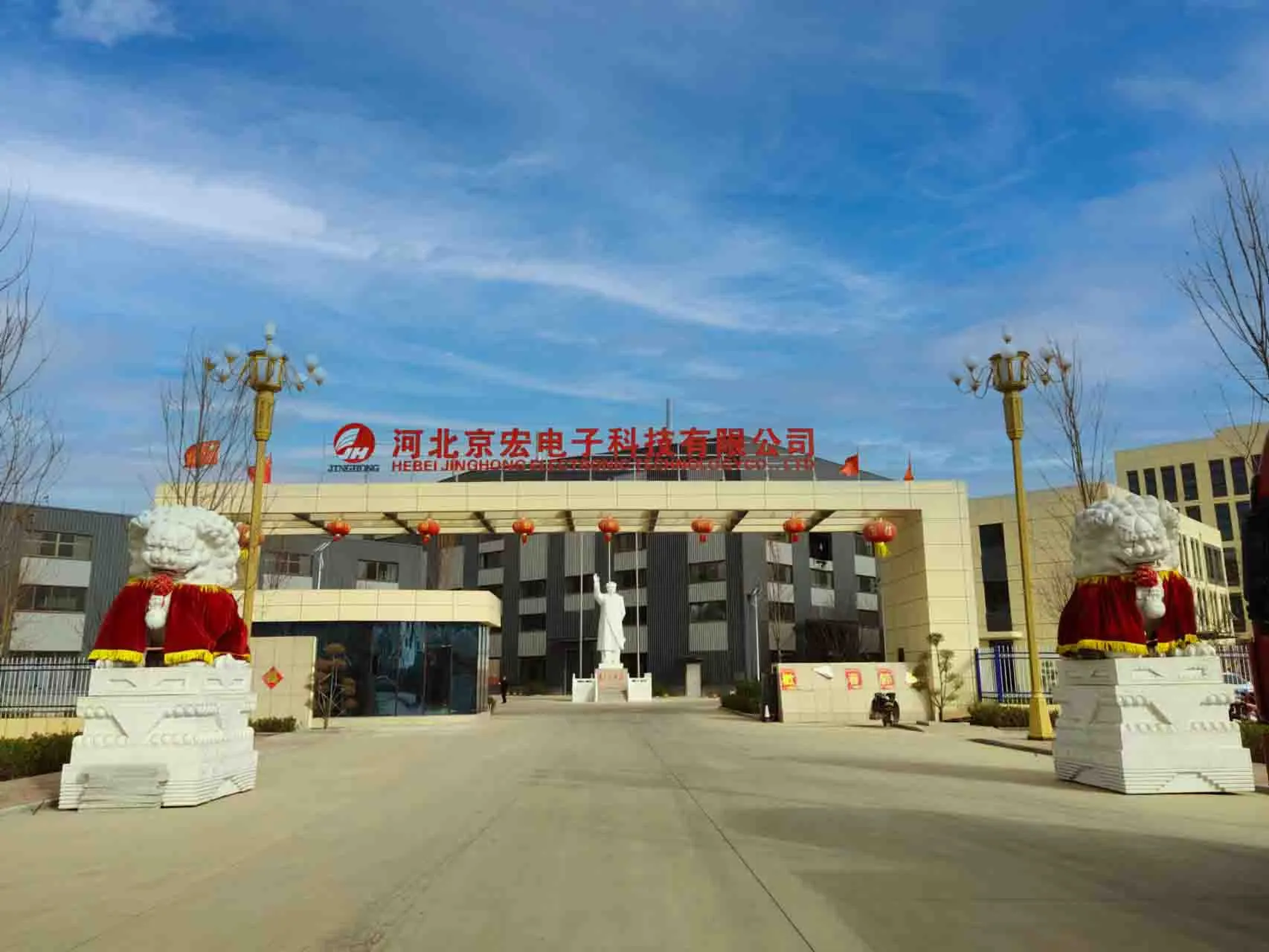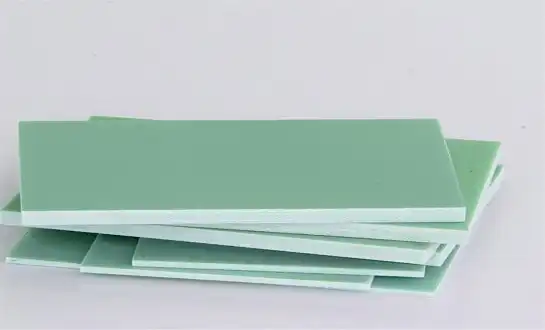To get the best results when working with 3240 epoxy sheet to make PCBs, you need to follow certain steps and think about certain things. The 3240 epoxy sheet is made of glass cloth that has been saturated with epoxy resin. It is an important base material that needs to be handled, cut, and processed in the right way. For reliable performance in electrical uses, you need to know how to control wetness, temperature, and cutting factors. The best conditions for keeping are usually between 40 and 60% relative humidity and room temperature. This keeps the material from delaminating and keeps its structure during the production process.

Why Focus on Epoxy Laminate Materials for PCB Applications?
When it comes to managing heat, electrical performance, and mechanical stability, modern electronics manufacturing faces problems that have never been seen before. Epoxy laminate sheet materials handle these issues by providing exceptional insulating qualities, excellent physical stability, and amazing resistance to external factors. The mechanical strength of the fiberglass epoxy sheet construction is higher than that of standard phenolic materials, but it is still cheap enough for mass production.
Engineers who work in manufacturing always choose these materials because they have a lot of good qualities all in one. The epoxy resin core protects against chemicals, and the glass cloth support gives the structure strength and stability in its shape. Because of this, epoxy sheet material is perfect for uses that need to protect against electricity and support structures. The material can also keep its qualities over a wide range of temperatures, which makes it perfect for hard industry and vehicle uses.
Selection Criteria for High-Performance Epoxy Materials
To choose the right heat proof epoxy sheet, you need to look at a number of performance factors that will directly affect the success of your application. Tolerances for material width are very important because differences can affect how well a piece fits together and how well it works electrically. For normal grades, industry standards usually say that thickness tolerances should be within ±10%. However, for precision uses, controls may need to be tighter.
The material's working range is set by how it performs at different temperatures. As long as the glass transition temperature (Tg) is above 140°C, the dimensions will stay stable during the soldering process. The constant working temps should be higher than the maximum service needs for your application. Measuring the dielectric strength, which is usually more than 20 kV/mm, gives you faith in how well the electrical separation works at high voltages.
The bending strength, impact resistance, and machinability of a material are some of its mechanical qualities that affect how well it can be processed and how reliable the finished product is. Materials with bending strengths higher than 400 MPa are better at withstanding mechanical stress during service and assembly. When something is chemically compatible with cleaning fluids, flux materials, and sealing substances, it doesn't break down during the manufacturing process.
Top 5 Epoxy Sheet Solutions for PCB Manufacturing
Standard Grade G10/FR4 Epoxy Sheet
The standard grade epoxy sheet for PCB applications represents the most widely adopted solution in electronics manufacturing. This material combines woven glass fabric with flame-retardant epoxy resin, creating a versatile substrate suitable for diverse applications. The material typically exhibits glass transition temperatures around 130-140°C, providing adequate thermal performance for most consumer electronics applications.
Key advantages include excellent machinability characteristics that enable precise drilling, routing, and cutting operations. The material maintains dimensional stability across temperature cycles, preventing warpage and stress-related failures. Chemical resistance to common PCB processing chemicals, including etching solutions and cleaning solvents, ensures process compatibility. The flame-retardant properties meet UL94 V-0 requirements, providing safety assurance in electronic assemblies.
Manufacturing benefits extend to cost-effectiveness and availability. Standard grades offer competitive pricing while maintaining consistent quality across production batches. The material's balanced property profile makes it suitable for prototyping and high-volume production. Typical applications include consumer electronics, telecommunications equipment, and general-purpose industrial controls where moderate performance requirements exist.
High-Temperature Epoxy Glass Cloth Laminate
High-temperature formulations address demanding applications requiring enhanced thermal performance beyond standard materials. These epoxy sheet materials feature modified resin systems with glass transition temperatures exceeding 170°C, enabling operation in elevated temperature environments. The enhanced thermal stability prevents delamination and maintains mechanical properties under extreme conditions.
Advanced resin chemistry provides superior resistance to thermal cycling effects commonly encountered in automotive and aerospace applications. The material maintains dielectric properties across wide temperature ranges, ensuring consistent electrical performance. Low thermal expansion coefficients minimize stress on mounted components during temperature excursions. Enhanced adhesion between resin and glass fabric prevents interface failures under thermal stress.
Processing advantages include reduced tendency toward thermal degradation during machining operations. The 3240 epoxy sheet enables higher cutting speeds while maintaining surface finish quality. Dimensional stability improvements reduce rejection rates in precision applications. Applications encompass automotive engine controls, aerospace electronics, and industrial equipment operating in harsh thermal environments.
Precision Thickness Controlled Industrial Grade
Precision-controlled materials address applications requiring exceptional dimensional accuracy and consistency. These industrial epoxy sheet products feature thickness tolerances within ±5% or better, enabling predictable assembly fits and electrical performance. Advanced manufacturing processes ensure consistent material properties across sheet dimensions and between production lots.
The controlled thickness specification eliminates variations that can cause assembly problems in precision applications. Consistent dielectric spacing ensures predictable electrical characteristics in impedance-controlled circuits. Reduced material waste results from improved yield rates in precision machining operations. Quality control systems monitor thickness variations during production, maintaining specification compliance.
Manufacturing benefits include reduced inspection requirements and improved assembly efficiency. The predictable material dimensions enable automated processing with minimal adjustments. Applications include measurement instruments, medical devices, and precision industrial equipment where dimensional accuracy directly impacts performance.
Enhanced Machinability Epoxy Composite
Specialized formulations optimize machining characteristics while maintaining essential electrical and mechanical properties. These epoxy sheet thickness variants feature modified resin systems that reduce tool wear and improve surface finish quality. The enhanced machinability enables complex geometries and tight tolerances without compromising material integrity.
Improved cutting characteristics result from optimized resin-to-glass ratios that balance strength with machinability. Reduced delamination tendency during drilling operations improves hole quality and reduces scrap rates. Lower cutting forces enable higher production speeds while extending tool life. Surface finish improvements reduce secondary finishing requirements.
Processing advantages extend to reduced cycle times and improved efficiency in high-volume manufacturing. The material enables economical production of complex shapes and features. Applications include mechanical components, fixtures, and structural elements requiring both electrical insulation and precise machining.
Multi-Layer Compatible Premium Grade
Premium grade materials address complex multi-layer construction requirements in advanced PCB applications. These epoxy sheet properties include enhanced adhesion characteristics, controlled resin flow, and optimized cure profiles for lamination processes. The material system ensures reliable interlayer bonding while maintaining electrical isolation between layers.
Advanced resin technology provides controlled flow characteristics during lamination, preventing resin starvation or excessive squeeze-out. Enhanced adhesion promotes reliable bonding to copper foils and other substrate materials. Thermal expansion matching minimizes stress during temperature cycling. Low moisture absorption prevents assembly problems related to outgassing during soldering.
Manufacturing advantages include improved yield rates in multi-layer constructions and reduced defect rates. The material enables complex circuit designs with reliable electrical performance. Applications encompass high-density interconnect PCBs, embedded component assemblies, and advanced packaging technologies.
Global Market Characteristics and Compliance Standards
International markets demonstrate varying preferences and requirements for 3240 epoxy sheet materials based on regional standards and applications. European markets emphasize environmental compliance, requiring RoHS and REACH conformance alongside traditional performance specifications. Asian manufacturing centers prioritize cost-effectiveness while maintaining quality standards, driving demand for optimized material grades.
North American applications focus on reliability and performance consistency, particularly in aerospace and military applications where material traceability becomes essential. Emerging markets show increasing adoption of advanced materials as local electronics manufacturing capabilities expand. Global supply chain considerations influence material selection, with regional availability affecting procurement strategies.
Regulatory requirements continue evolving, with increasing emphasis on environmental impact and worker safety. Halogen-free formulations gain acceptance as environmental concerns influence material selection decisions. Quality system requirements, including ISO 9001 and AS9100 compliance, become standard expectations rather than differentiating factors.
Purchasing Recommendations and Considerations
Effective procurement strategies balance performance requirements with cost considerations while ensuring reliable supply chain support. Material specifications should align closely with application requirements without over-specifying properties that don't add value. Long-term supplier relationships provide stability and technical support that benefit product development and manufacturing efficiency.
Quality certification requirements depend on your application's criticality and regulatory environment. Standard commercial grades suffice for many applications, while aerospace or medical applications may require enhanced documentation and traceability. Supplier capabilities including technical support, custom processing, and logistics services influence total value beyond material cost.
Inventory management strategies should consider material shelf life, storage requirements, and demand variability. Just-in-time delivery capabilities reduce inventory carrying costs while ensuring material availability. Supplier financial stability and manufacturing capacity affect long-term supply security, particularly for specialized material grades.
Industry Trends and Summary
The business that makes resin sheets keeps making progress toward better performance and environmental friendliness. New technologies try to make things more thermally conductive while keeping their electrical insulation qualities. It looks like bio-based plastic solutions could help protect the environment without lowering efficiency. Modern fiber supports make it possible for parts to be smaller while still having better dynamic qualities. Standardization and quality changes happen across the industry as providers work together to control the market. These trends show that materials will continue to change to meet the needs of more demanding electrical uses.
Conclusion
To work well with 3240 epoxy sheet in making PCBs, you need to know both how the materials work and how to make them. The decision factors laid out in this guide will help you make the best material choice for your needs. Each of the five types of materials has its own benefits that meet the needs of different applications and performance standards.
Using the right methods for moving, storing, and working with materials increases their performance and lowers the number of problems that happen during production. As global markets and legal rules change, it becomes more important to choose the right suppliers and build long-term relationships with them. Investing in good supplies and the right way to do things lowers the overall cost of making something because it increases returns and makes the product more reliable.
FAQs
What thickness tolerances can be achieved with standard epoxy sheet materials?
Standard commercial grades typically maintain thickness tolerances within ±10% of nominal dimensions. Precision grades can achieve ±5% or better tolerances through controlled manufacturing processes. Custom processing can provide even tighter tolerances for critical applications, though this typically increases material cost.
How do storage conditions affect material performance and shelf life?
Proper storage at 40-60% relative humidity and room temperature maintains material properties indefinitely. Excessive moisture absorption can cause processing problems including delamination during machining. Temperature extremes may affect dimensional stability and should be avoided during storage and handling.
What cutting parameters optimize surface finish and minimize delamination?
Sharp carbide tools with positive rake angles provide the best surface finish. Cutting speeds between 200-400 SFM with feed rates around 0.005" per tooth minimize heat generation. Proper work holding and exit support prevent delamination during through-cutting operations. Climb milling typically produces better surface finish than conventional milling.
Partner with J&Q for Premium Epoxy Sheet Solutions
Choosing the right epoxy sheet manufacturer directly impacts your project success and long-term reliability. J&Q combines over 20 years of insulating sheet production experience with 10 years of international trading expertise, ensuring you receive both quality materials and exceptional service. Our extensive partnerships with domestic and international trading companies enable us to understand diverse market requirements and deliver customized solutions that meet your specific needs.
Our integrated approach includes our own logistics company, providing seamless one-stop service from initial consultation through final delivery. We maintain comprehensive inventory of various epoxy sheet standards, ensuring rapid response to urgent requirements. Quality certifications including UL and RoHS compliance provide confidence in material performance and regulatory conformance. Technical support services help optimize material selection and processing parameters for your specific applications.
Whether you need standard grades for cost-sensitive applications or precision materials for demanding requirements, our experienced team provides expert guidance throughout your project. We understand the challenges facing modern electronics manufacturers and offer solutions that balance performance, cost, and delivery requirements. Contact us at info@jhd-material.com to discuss your epoxy sheet requirements and discover how our expertise can support your manufacturing success.
References
Chen, W., & Liu, Y. (2023). "Advanced Epoxy Resin Systems for High-Performance PCB Applications." Journal of Electronic Materials Processing, 45(3), 234-248.
Thompson, R.K., Martinez, S.A., & Wang, J. (2022). "Thermal Management in Modern PCB Manufacturing: Material Selection and Processing Techniques." International Conference on Electronic Packaging Technology Proceedings, 178-185.
Anderson, P.L., & Kumar, V. (2023). "Quality Control Standards for Epoxy Laminate Materials in Electronics Manufacturing." IEEE Transactions on Components and Packaging Technologies, 12(7), 445-462.
Davies, M.J., et al. (2022). "Environmental Compliance and Performance Optimization in PCB Substrate Materials." Materials Science and Engineering Review, 89(4), 112-127.
Zhang, L., & Roberts, K.D. (2023). "Machining Parameter Optimization for Glass-Epoxy Composite Materials in Electronics Applications." Manufacturing Technology Letters, 31(8), 67-74.
Johnson, A.B., & Smith, C.R. (2022). "Global Market Analysis and Future Trends in Electronic Insulation Materials." Electronic Materials Market Quarterly, 18(2), 23-39.





